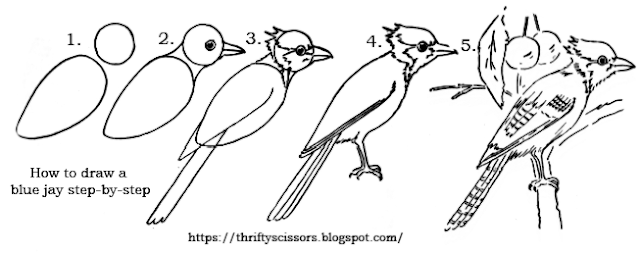Draw three interesting birds: the peacock, the ostrich and the blue jay, using simple shapes. Step-by-step illustrations are shown below so that young students may discover just how simple it is the accomplish these drawing exercises.
When you first look at a Peacock you might think he would be difficult to draw. But if you just break down his body into simple shapes starting with an oval, drawing becomes simple. Add a head, then his feet, next his wings and last his beautiful tail.
Start with a circle to draw the ostrich. Some say that if he can't see you, he thinks that you can't see him. He is the largest bird in the world and can't even fly! But how he can run and kick with those giant long legs of his!
The blue jay is a member of the Crow family, he is not such a plunderer as the Crow. In fact, he does a great deal of good by eating many insects that feed on the foliage of trees. He has a bad habit of being meddlesome. This makes him very unpopular in bird society and when he approaches a tree, the other birds fly away.





